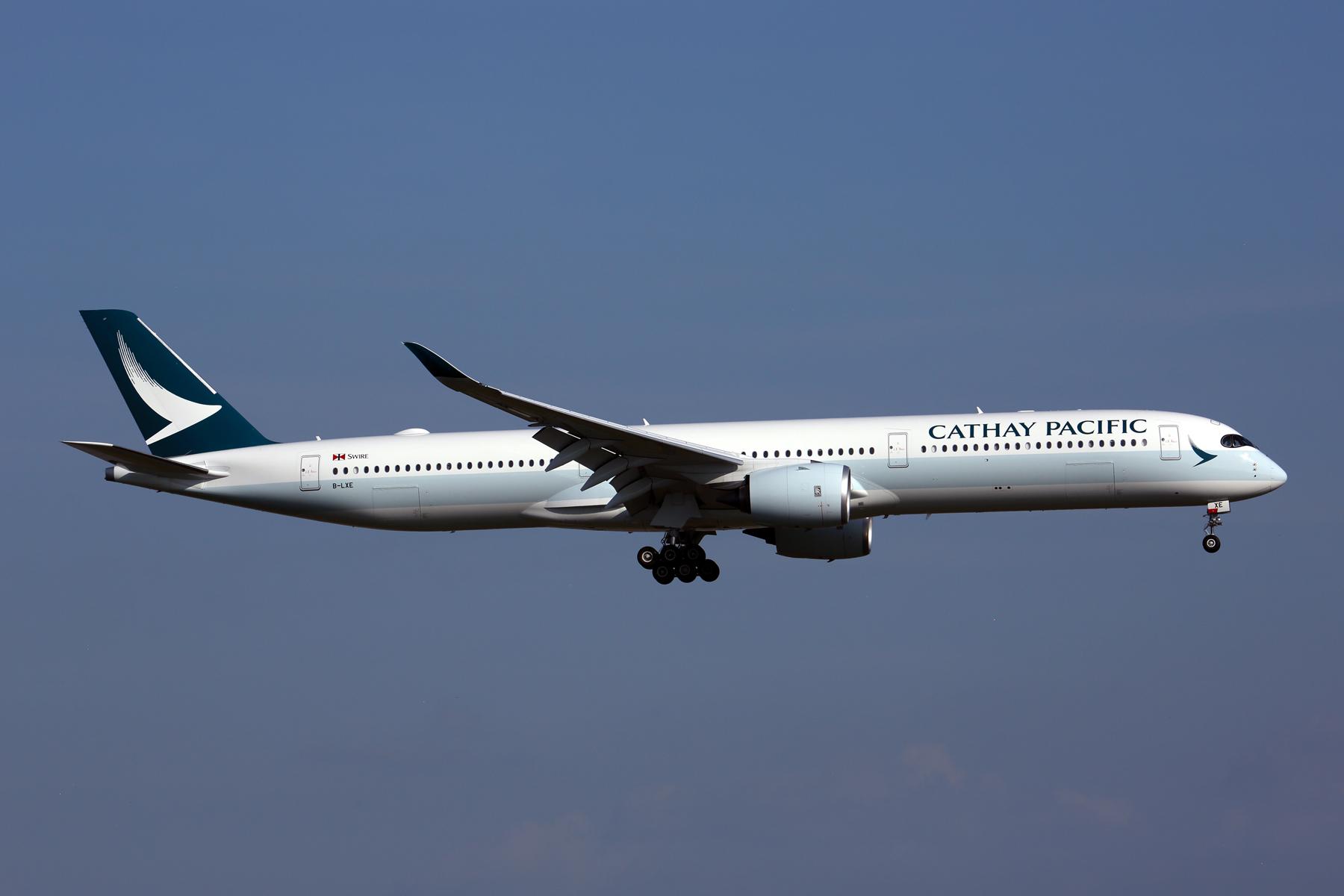
Hong Kong-based Cathay Pacific has revealed new details of significant aircraft delivery deferrals, although the carrier has so far not canceled any of its extensive order backlog.
The Cathay Pacific Group–including the parent carrier, Hong Kong Express and Cathay Dragon–now expects to receive 10 aircraft in 2020, down from previous plans for 17. The 2021 delivery total has dropped to eight versus earlier forecasts for 20. The airline’s latest fleet update coincided with its report of a heavy net loss for the first half of 2020.
Cathay had previously confirmed it had negotiated an extension of the delivery windows for its Airbus A350 and narrowbody orders. The new information shows more specifically how many aircraft will be deferred over the next few years.
The parent carrier’s remaining Airbus A350 orders are affected by the deferrals. Cathay was due to receive four A350-900s and three A350-1000s in 2020, and five -1000s in 2021. Under the latest changes, the carrier will receive three -900s and one -1000 in 2020, one -900 and two -1000s in 2021, and two -900s and three -1000s in 2022 or later.
In total, Cathay will receive six more deliveries of each type. This means the carrier has also switched two of its -1000 orders to -900s, Cathay chief operations and service delivery officer Greg Hughes said.
Cathay said it is still in “advanced negotiations” with Boeing regarding the deferral of its 21 777-9 orders, which were scheduled to begin arriving in 2020. The carrier is now listing these aircraft as due in 2022 or beyond. Hughes confirmed the discussions with Boeing do not involve canceling any of the 777-9 orders.
There are also changes to A321neo deliveries for subsidiary Cathay Dragon. The carrier was originally due to receive its first six in 2020, with eight in 2021 and two in 2022 and beyond. Under the revised schedule it will take delivery of two in 2020, four in 2021 and 10 in 2022 or later. Hughes said the first two A321neos are expected to arrive around October-November.
The remainder of the Cathay group’s orders are A320neos and A321neos for its LCC subsidiary Hong Kong Express. The delivery schedule for these is unchanged, with four A320neos due in 2020 and one in 2021, and 16 A321neos scheduled for 2022 and beyond.
As expected, Cathay fell to a steep loss for the six months through June 30. The group reported a net loss of HK$9.9 billion ($1.3 billion) for the half year, versus a HK$1.3 billion profit a year earlier. Contributing to 2020’s loss was HK$2.5 billion in impairment charges related to 16 aircraft that are not expected to return to service before they retire or are returned to lessors.
For Cathay and Cathay Dragon, passenger revenue for the period was down 72.2% year-on-year to HK$10.4 billion. Capacity declined by 72.6%. Operating costs were down by 36.7%. Cargo revenue rose by 8.8% on a 24.6% capacity drop.
In other fleet developments, Cathay said it will relocate about a third of its aircraft from Hong Kong to overseas storage locations with more suitable climates. The first lot of aircraft is being sent to Alice Springs, Australia, and airline chairman Patrick Healy said the company is “in discussions with other [storage] locations as well.”
Cathay Pacific reported that it has completed its HK$39 billion recapitalization process that was announced in June. The recapitalization gives the carrier “the time and the platform we need” to develop a long-term strategy, Healy said. Cathay management is reviewing the business plan and will report to the board in the fourth quarter.
This report will include a recommendation on the “optimum size and shape” of the airline, and will “involve some very tough decisions,” Healy said, noting that “current cost control measures are not sufficient.”





